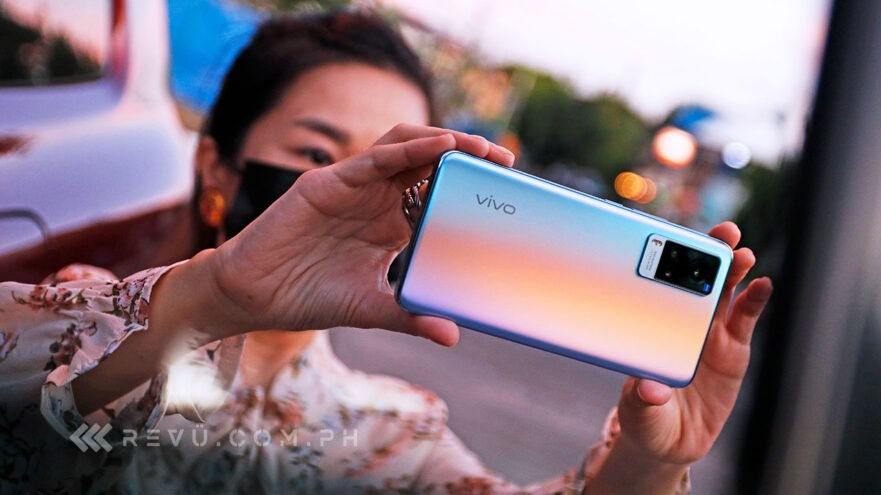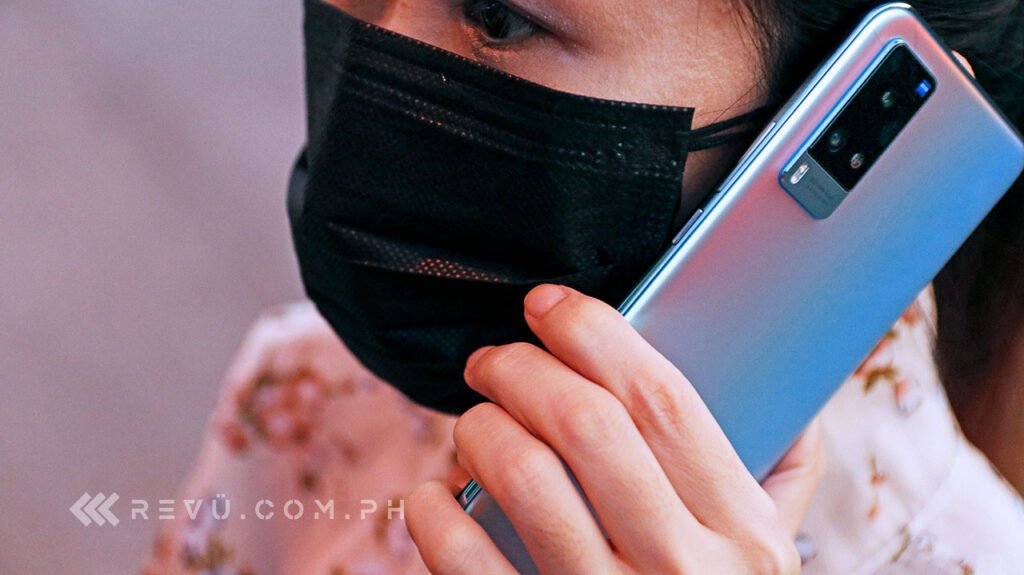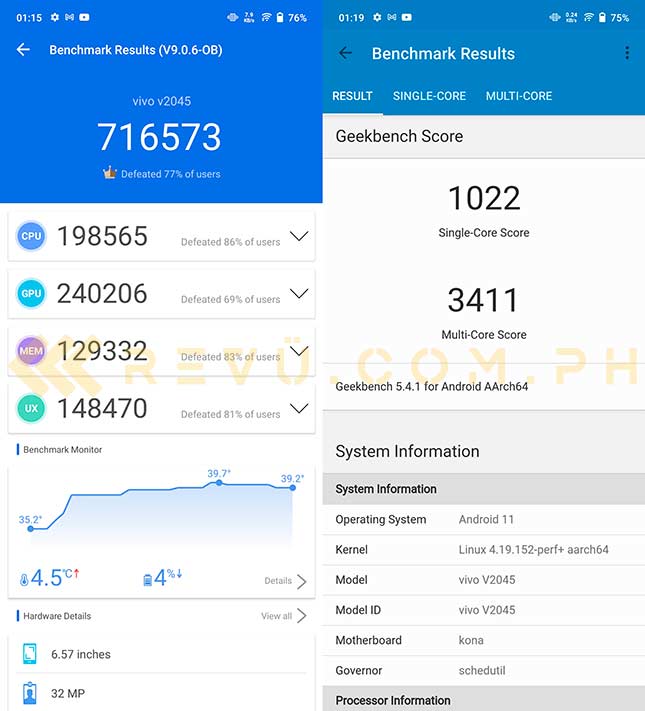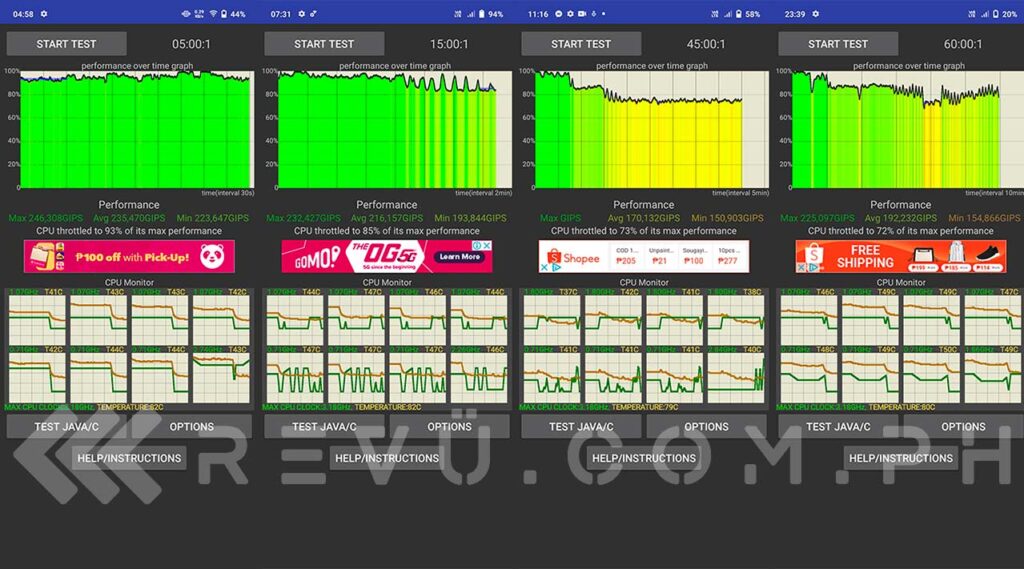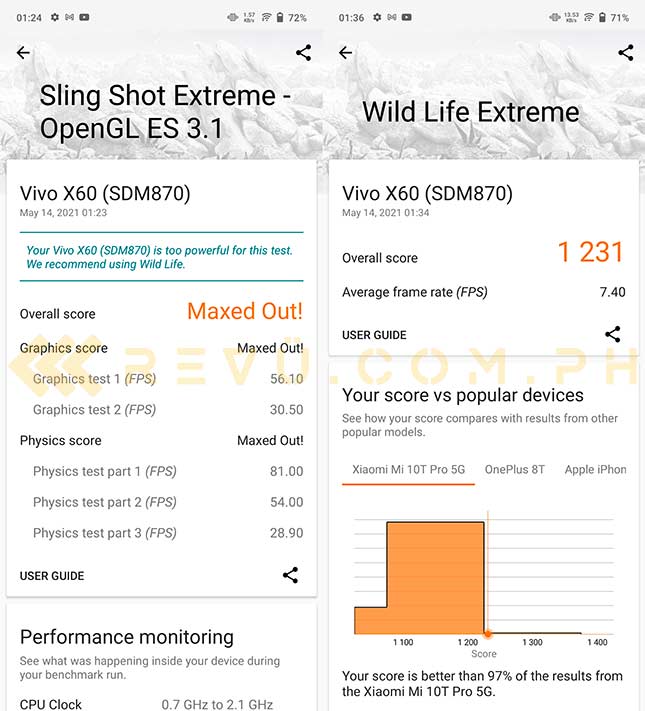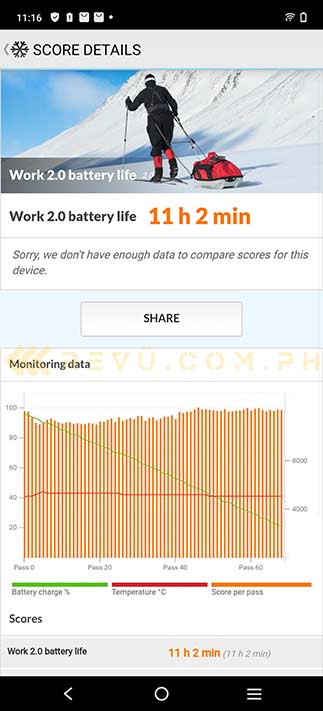Estimated reading time: 14 minutes
Vivo recently rolled out the red carpet for its latest flagship series in the Philippines, albeit without the Pro variant to go along with the standard model. What we have for you today is the vanilla Vivo X60, in global spec, which is now available for preorder in the country until the 21st, with shipping slated for May 22.
(Update, May 20: The phone’s now official in the Philippines! See its price here.)
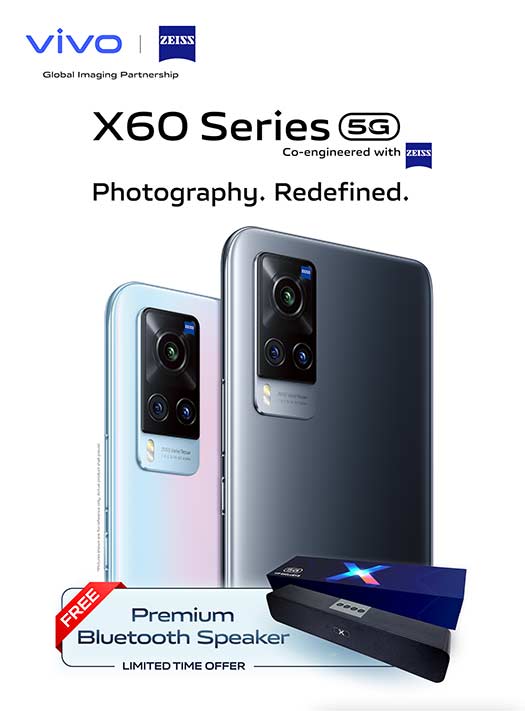
In the Philippines, the Vivo X60 is now available for preorder until May 21. Each preorder comes with a free premium Bluetooth speaker
Those last few lines are important, because the local variant of the X60 we have should not be mixed up with the Samsung Exynos 1080-based X60 model in China and X60t with a MediaTek Dimsensity 1100 chipset. It’s confusing, that’s for sure. But the thing to remember here is that the Philippines is getting the version with a superior processor.
The rest of the hardware has also picked up some considerable upgrades here and there. Read our review for our thoughts and verdict on the Vivo X60 at launch.
If it ain’t broke, don’t fix it
Like the previous lineup, the Vivo X60 is a sleek glass-plastic sandwich with a frosted back, a large rectangular camera module with the 48-megapixel main sensor and Zeiss badge in an island, and a small cutout in the top-middle of the screen to house the selfie shooter. Surprisingly enough, it looks more like the Vivo X50 Pro than its direct predecessor, the Vivo X50, except the glass on the front isn’t curved but is now protected by Corning Gorilla Glass 6 for added durability.
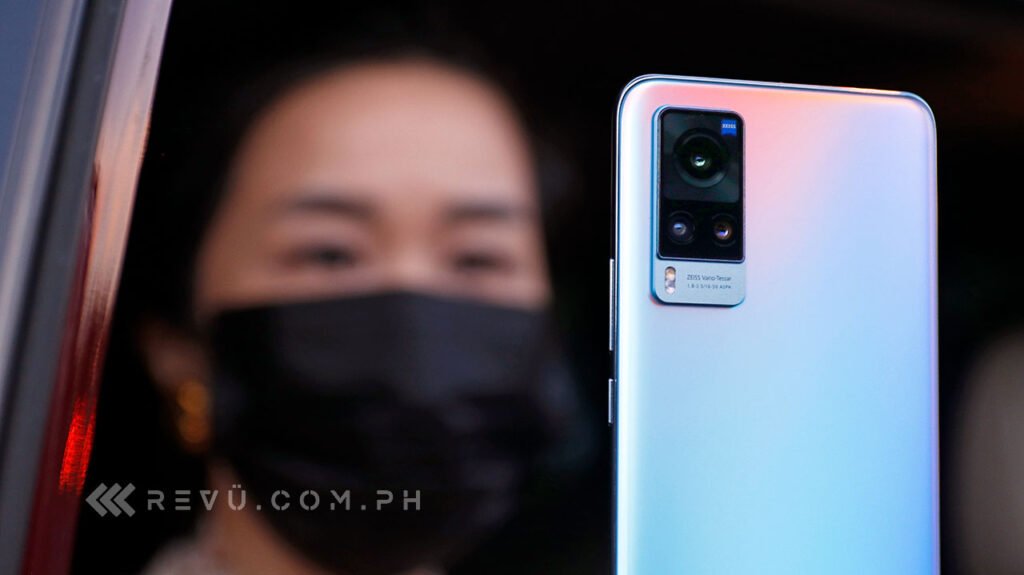
The Vivo X60 is a sleek glass-plastic sandwich with a frosted back and a large rectangular camera module with the 48-megapixel main sensor and Zeiss badge in an island
The X60 is available in Shimmer Blue and Midnight Black colors. Obviously, ours is the Shimmer Blue variant, which flaunts a gradient design that changes color when light falls on it from different angles and uses what Vivo calls AG (anti-glare?) technology to incorporate an anti-glare finish that keeps fingerprints out of sight.
Vivo took the “if it ain’t broke, don’t fix it” approach this year and kept the design language of the X50 series. The X60 feels nice in the hand and looks even nicer in person, so we really can’t complain about the recycled overall styling. Needless to say, Vivo has once again decided against adding a headphone jack and expandable storage on its X series flagship.
The textured power button is just above the midpoint on the right, the volume rocker over it. Both buttons are made of plastic, like the frame, and located where you’d expect them to be. There is no visible fingerprint scanner on the side or at the back; it’s built into the display, though we wish it were located a little higher, a little closer to the middle section of the panel, where it would be easier to access. Otherwise, it’s a quick and accurate sensor, and we expected no less from one of the pioneers of under-display fingerprint recognition in the industry.
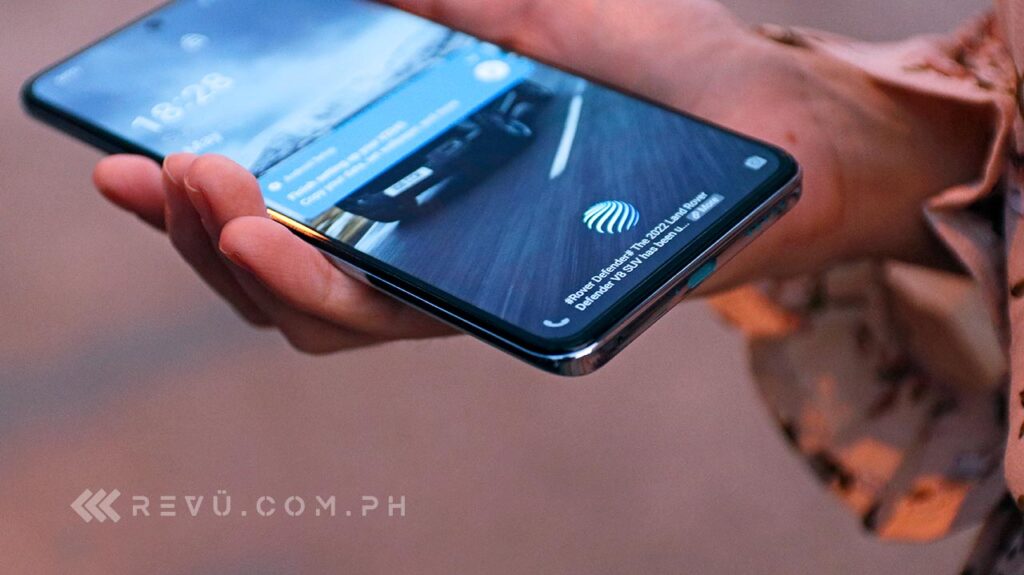
The Vivo X60 has a quick and accurate fingerprint sensor, and we expected no less from one of the pioneers of under-display fingerprint recognition in the industry
At the bottom, you’ll find dual SIM trays, a USB-C port, and a down-firing loudspeaker tasked to single-handedly handle sound output. Stereo speakers are common in the premium segment, so the extra channel rightfully feels like a missed opportunity. On the plus side, the speaker is quite good in terms of loudness, though the mids and bass could be a lot better.
One-handed use isn’t a problem here, especially since the X60 is only 7.4mm at its thickest point and weighs a palm-friendly 176 grams. In terms of size and weight, it’s about identical to last year’s X50, which we think strikes a good balance between convenient operation and offering a satisfying viewing experience.
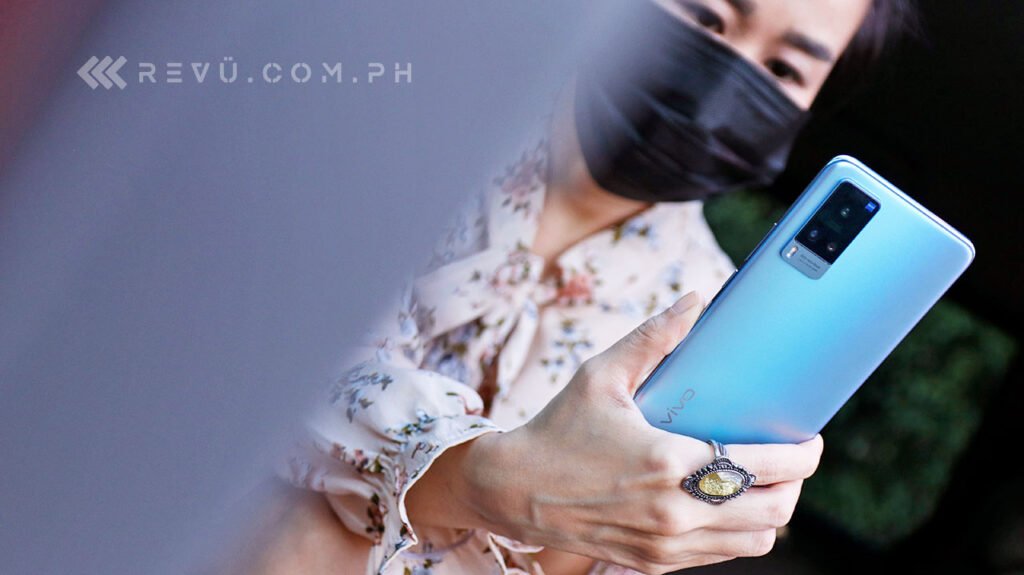
The Vivo X60 is only 7.4mm at its thickest point and weighs a palm-friendly 176 grams, which we think strikes a good balance between convenient operation and offering a satisfying viewing experience
On a related note, we should point out the free plastic case that ships in the retail box is a departure from most bundled cases we’ve seen, most of which are made of silicone and turn yellow over time. The Vivo X60’s case is slim at the top and bottom, and doesn’t cover the sides of the phone, allowing for easier one-handed use at the expense of leaving the side rails exposed all the time. Some users may not be comfortable with that, but we suppose it’s a fair tradeoff that potentially benefits user experience in a big way.
A solid entertainment package
The Vivo X60 features a 6.56-inch E3 AMOLED flat screen with FHD+ resolution, HDR10+ support, and always-on functionality, same as last year. The small bezels and punch-hole cutout in the top middle for the selfie camera also remain. In terms of picture quality, you’re not likely to see a big difference between the X60 and X50 when viewing content; both displays are pleasing to look at, with vibrant yet mostly accurate colors, deep, inky blacks, and generous viewing angles.
Specs- and performance-wise, the notable upgrade here is the move to 120Hz from 90Hz on the last-gen model. The higher refresh rate — which is double the industry average — makes a real, tangible difference, especially if you’re coming from a run-off-the-mill panel, so much so that you’ll probably never want to use a 60Hz Android handset ever again.
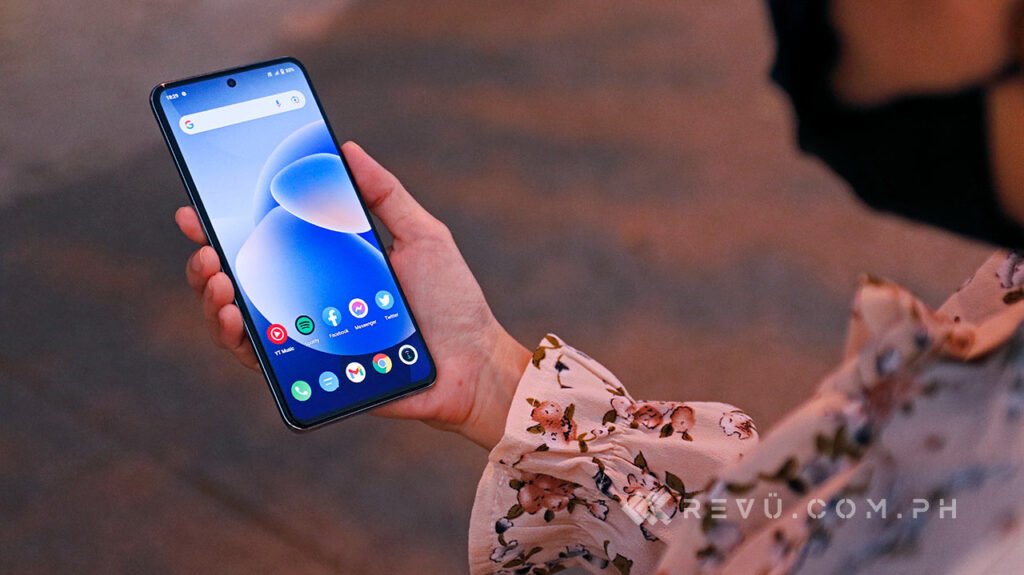
The higher, 120Hz refresh rate — which is double the industry average — makes a real, tangible difference, especially if you’re coming from a run-off-the-mill panel, so much so that you’ll probably never want to use a 60Hz Android phone again
Everything on this screen, from scrolling to system animations, just looks much smoother at the highest refresh rate. This panel is plenty bright, too, so you don’t always need to find a shade in outdoor settings, even during the midday when the sun is brightest.
If you have a Netflix subscription, or access to other popular streaming platforms, for that matter, you may be thrilled to know that the Vivo X60 not only supports HD playback, but HDR as well. You’ll be surprised at how many manufacturers skip that feature even on their more expensive devices. On the go, the ample-sized, HDR-capable E3 AMOLED here coupled with the decent single speaker make for an excellent entertainment package.
Powerhouse performance
Unlike their Chinese counterparts, which rely on Samsung’s Exynos 1080 chipset, the international variants of the Vivo X60 and Vivo X60 Pro pack a Qualcomm Snapdragon 870 SoC. When asked about the decision to switch to the Snapdragon 800 series at an online international media briefing we attended, Vivo revealed that global consumer preference played a huge part in the move to drop the high-end Exynos chip. It’s probably the better choice anyway, even though the Exynos 1080 is built on a more advanced 5nm process and boasts a faster Cortex-A78 CPU and Mali-G78 graphics.
As for the Snapdragon 870, it’s basically an overclocked variant of the Snapdragon 865 Plus (which is an overclocked Snapdragon 865) with higher clock speeds for both the CPU and GPU. It uses a 7nm process, too. The chip features a high-performance Cortex-A77 core running up to 3.2GHz — the highest ever for a mobile platform to date — versus the Snapdragon 865’s 2.84GHz Cortex-A77. The GPU is still an Adreno 650, while the 5G modem is a Snapdragon X55.
The Snapdragon 870 can take advantage of super-fast internet speeds over 5G networks in the Philippines and offers a significant performance boost across the board, versus the Snapdragon 730 in the X50, which is restricted to 4G and slower connections. The Antutu Benchmark score we recorded in our review of the X50 was 262,044; the X60 easily smashes that result with a tally of over 700,000 points. And while both have 5G modems, the X60 is also glaringly faster than the Vivo X50 Pro, which is built around the Snapdragon 765G.
The Vivo X60 looks great on paper, and thankfully, it is also great in practice. This phone exudes flagship performance, especially on a 1080p, 120Hz display, and rarely feels like it would slow down. Everything feels fast, fluid, and responsive under our finger; opening apps and switching between them is a smooth affair; and high-end gaming is possible, sometimes even at frame rates higher than 60 fps.
It’s also worth mentioning that although our unit comes with 12GB of LPDDR4X RAM, the system is capable of extending the memory by 3GB thanks to Vivo’s new virtual RAM feature. This uses storage as virtual RAM on the smartphone, allowing it to operate beyond its physical RAM limits. It should make for a smoother experience overall.
However, we can’t say for sure that we felt the benefits of the added RAM during our testing. Then again, that’s probably because the Snapdragon 870 coupled with the generous physical RAM in our unit is plenty powerful enough for any task.
Gameplay video: Genshin Impact, Dead Cells (4:01 mark), and Mobile Legends: Bang Bang (8:01 mark)
We played Genshin Impact, the most demanding Android game we can play on the X60, and maxed out the settings including FPS, which was set to 60. Gameplay was consistently smooth and flawless, but the handset did get a little warm after 30 minutes of nonstop gaming.
Another thing we noticed on the gaming front: The Ultra image quality preset in Mobile Legends is not available on the Vivo X60, likely as a result of the Qualcomm Snapdragon 870 not being optimized for the game. That’s unfortunate news for fans of the most popular MOBA in the Philippines and many other Asian countries.
The X60 has a 4,300mAh battery backup, up from the X50’s 4,200mAh cell. It’s still a decent capacity even at a time when competitors in the flagship space start at 4,500mAh and go as high as 5,000mAh sometimes. The battery endurance we measured on our unit is decidedly average. A single charge usually keeps the phone powered for a day of moderate usage. Using the PCMark battery test, this Vivo lasted 11 hours and 2 minutes.
When it’s time to top up, the bundled 33-watt power brick should be sufficient for quick and painless charging. Thirty minutes of time plugged in is enough to take the battery to 55% charge, while a full charge from zero takes a little over an hour — 72 minutes in our test, to be exact. Unfortunately, there’s no wireless option here.
Portrait-perfect
The Vivo X60 has a triple camera at the back. The main shooter sits up top and has a 48-megapixel Sony IMX598 sensor behind a sizable f/1.8, 26mm-equivalent lens. Below it, you’ll find a pair of 13-megapixel cameras with ultra-wide and telephoto lenses on the left and right sides, respectively. There’s no dedicated macro sensor here; instead, the ultra-wide-angle option pulls double duty as a camera for extreme closeups.
The excellent gimbal-like stabilization of the X50 Pro isn’t offered here, but you do get optical and electronic image stabilization for photos and videos. For selfies, Vivo’s newest flagship is equipped with a 32-megapixel front camera, same as the models before it. If you’re someone who wants to shoot vlogs or create video content for social media, you’ll be pleased to know that the Vivo X60 is capable of 4K video recording at up to 60 fps, albeit minus the benefit of image stabilization of any sort.
Shot on the Vivo X60: 1-2) Macro; 3) Auto; 4) Ultra-wide; 5) 1x; 6) 2x zoom; 7) 20x zoom; 8) Ultra-wide; 9) 1x; 10) 2x zoom; 11) 5x zoom; 12) 10x zoom; 13) 20x zoom; 14) Ultra-wide; 15) 1x; 16) 2x zoom; 17) Auto (dim); 18) Night mode; 19-20) Pro, aka Manual; 21-22) Selfies
Picture quality is a high point, as expected. The X60 does a fine job across light conditions. Photos tend to stay sharp in both daylight and at night. Night mode is available on all three cameras, but we recommend you stick with the standard focal length to get the best results and enjoy a more pleasant focusing experience.
Portraits
However, we think this camera system does its most impressive work when shooting portraits using the primary and tele lenses. That’s 1x and 2x, respectively, on the viewfinder. Switching to 0.6x activates the ultra-wide shooter, whereas Macro mode is a setting you can enable by tapping the Macro icon, which looks like a little flower at the top of the Camera app.
Vivo’s new camera interface on Android 11-based Funtouch OS 11 introduces a far simpler and more straightforward way to take pictures and videos. Gone is the confusing and clunky interface on previous Vivo models that requires multiple taps to switch lenses.
Should you buy the Vivo X60?
Vivo Philippines has yet to announce local pricing for the Vivo X60. We hope it will be priced reasonably, perhaps somewhere around the P34,000 (roughly$711 converted) mark based on what the phone sells for in other countries.
Assuming that’s indeed the case, then the X60 is a pretty solid option in the sub-flagship segment if you’re not too concerned about the price-performance ratio. It looks great; it feels nice to hold and operate; the AMOLED screen is bright, vivid, and plenty fast and responsive; the rear camera impresses when it comes to taking portraits; and the Snapdragon 870 is a preferable alternative to the industry-leading Snapdragon 888, especially if battery life is one of your biggest concerns when buying a smartphone.
The Vivo X60 looks great and feels nice to hold and operate; the AMOLED screen is bright, vivid, and plenty fast and responsive; the rear camera impresses, mainly when it comes to taking portraits; and the Snapdragon 870 is a preferable alternative to the Snapdragon 888, especially if battery life is one of your biggest concerns when buying a phone
While there are plenty of cheaper options on the local market that offer about the same performance, we like that the Vivo X60 offers a slightly different value proposition to customers who can afford to pay extra. At the very least, it delivers many speed improvements over the X50 (and X50 Pro), so if you missed the boat on the previous X series, this year’s entry should be worth the wait.
Vivo X60 specs
- 6.56-inch E3 AMOLED with punch-hole display, 2,376 x 1,080 resolution (20:9), 120Hz refresh rate, 240Hz touch-sampling rate
- 7nm octa-core Qualcomm Snapdragon 870 with 5G
- 12GB RAM
- 256GB storage
- Triple rear cameras: 48-megapixel main, 13-megapixel ultra-wide, and 13-megapixel portrait
- 32-megapixel front camera
- Fingerprint reader (under-display)
- 4,300mAh battery with 33-watt fast charging
- Funtouch 11.1 based on Android 11
- Color: Shimmer Blue
Share this Post


